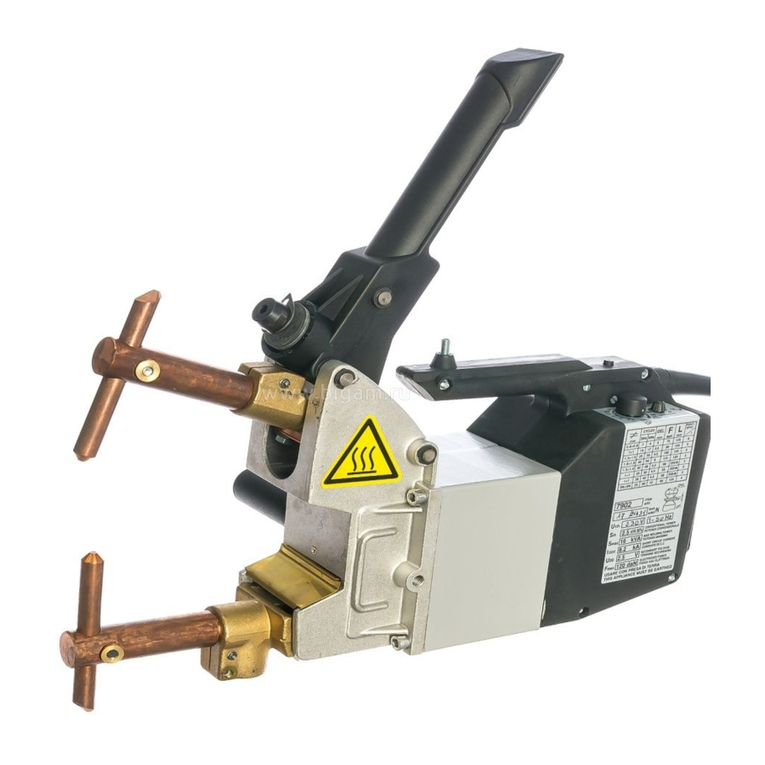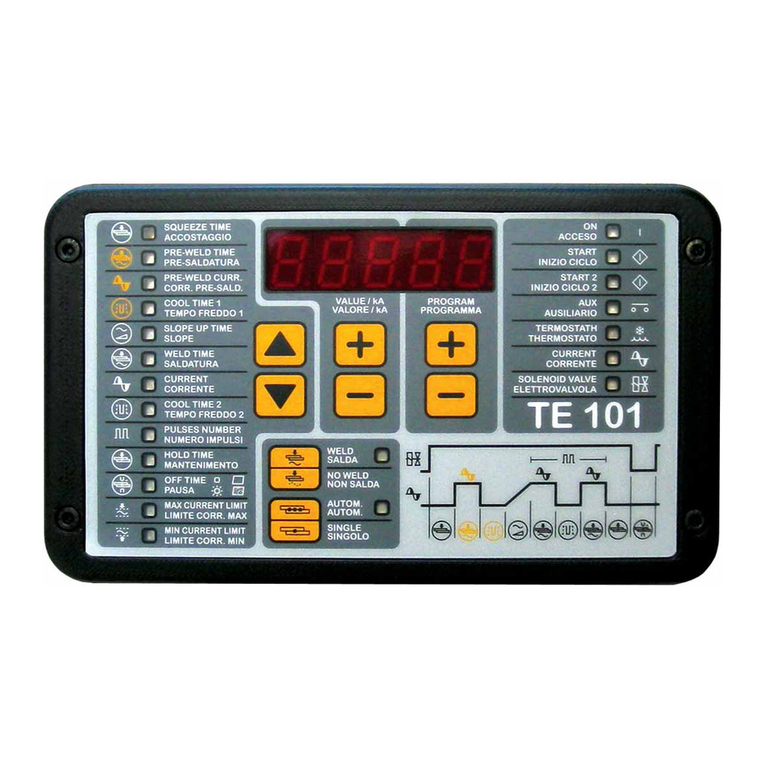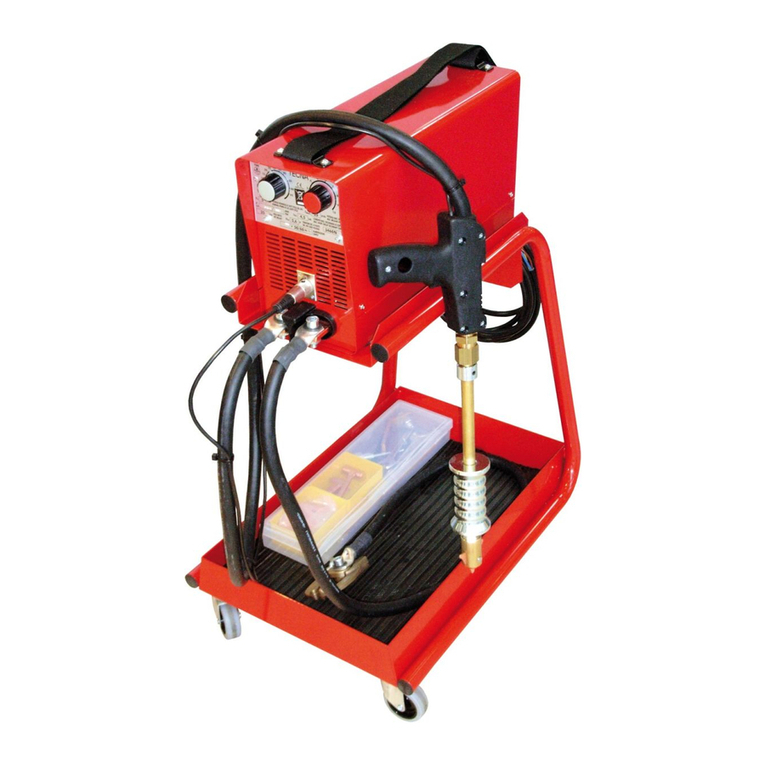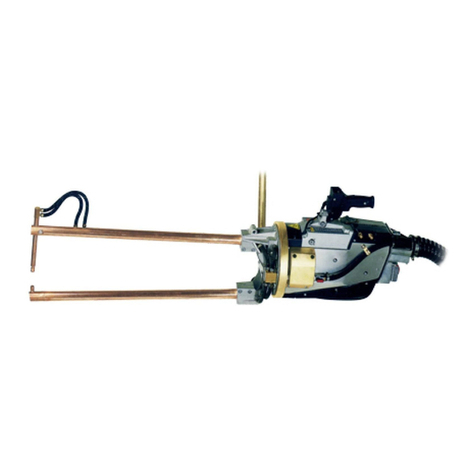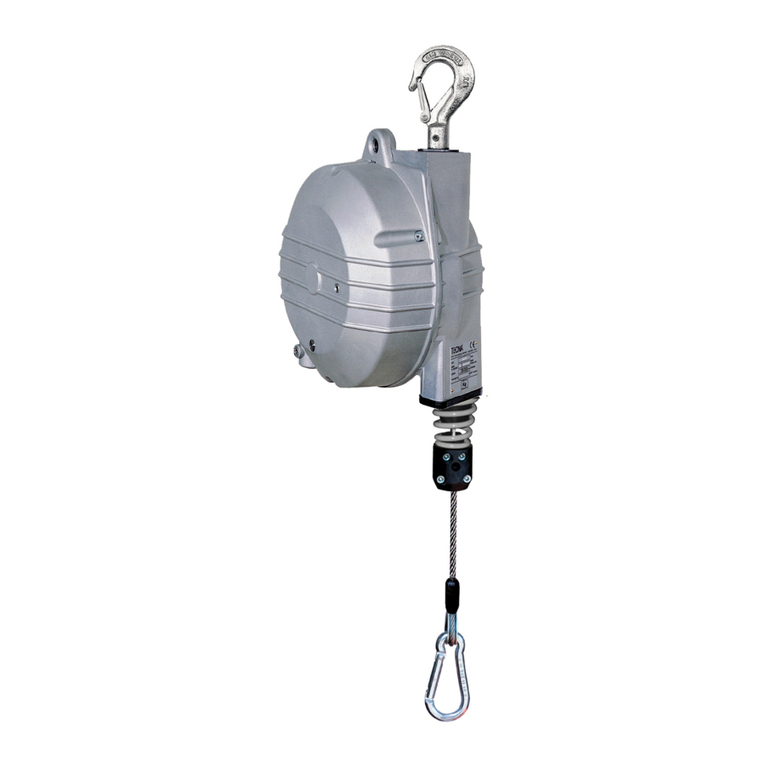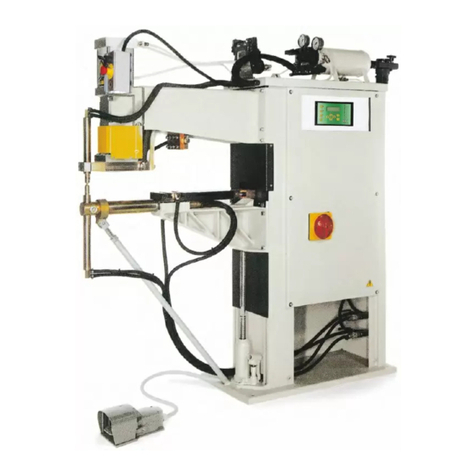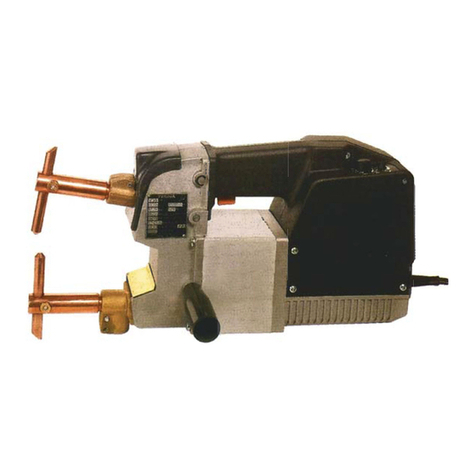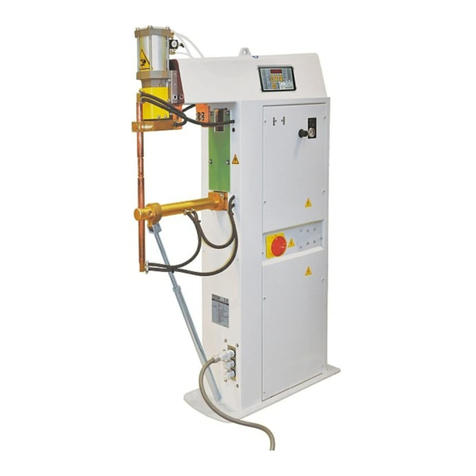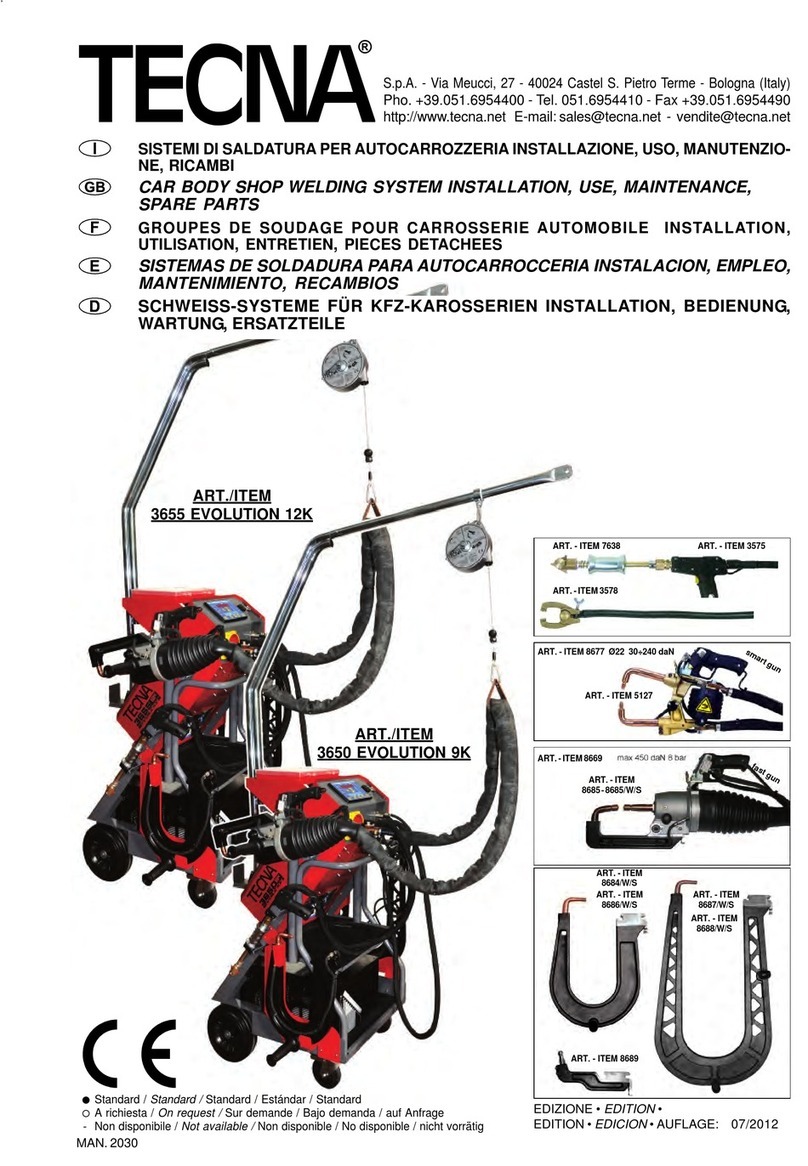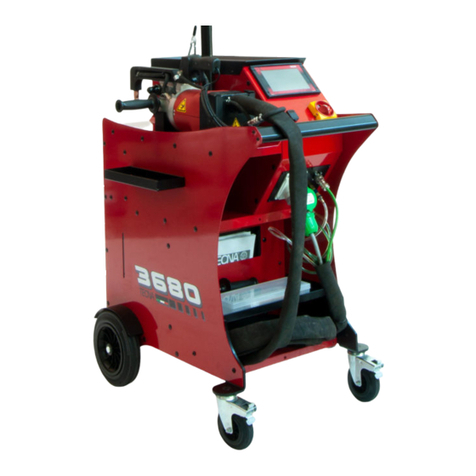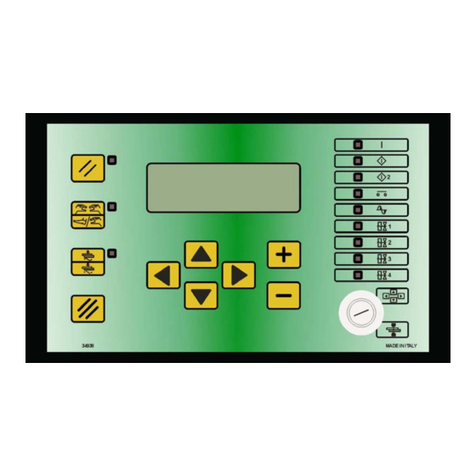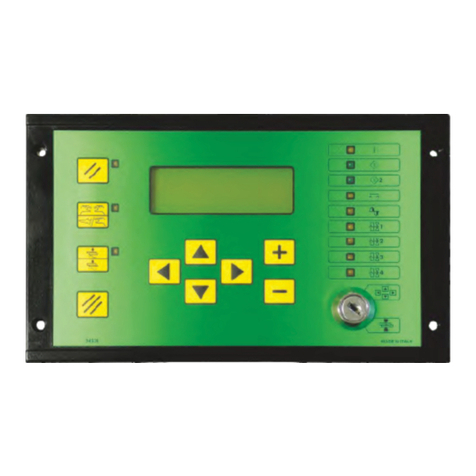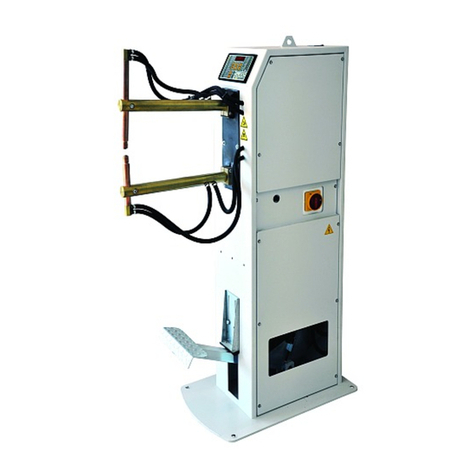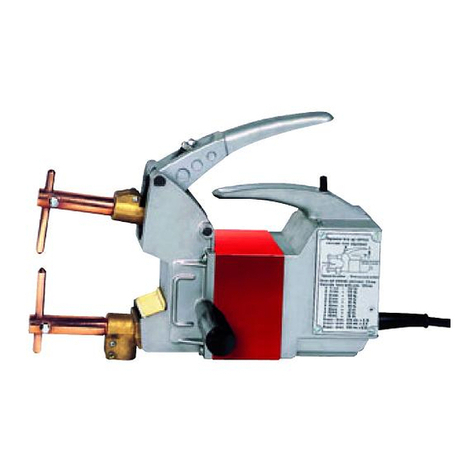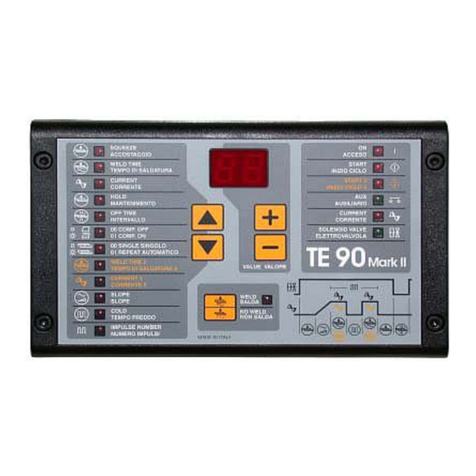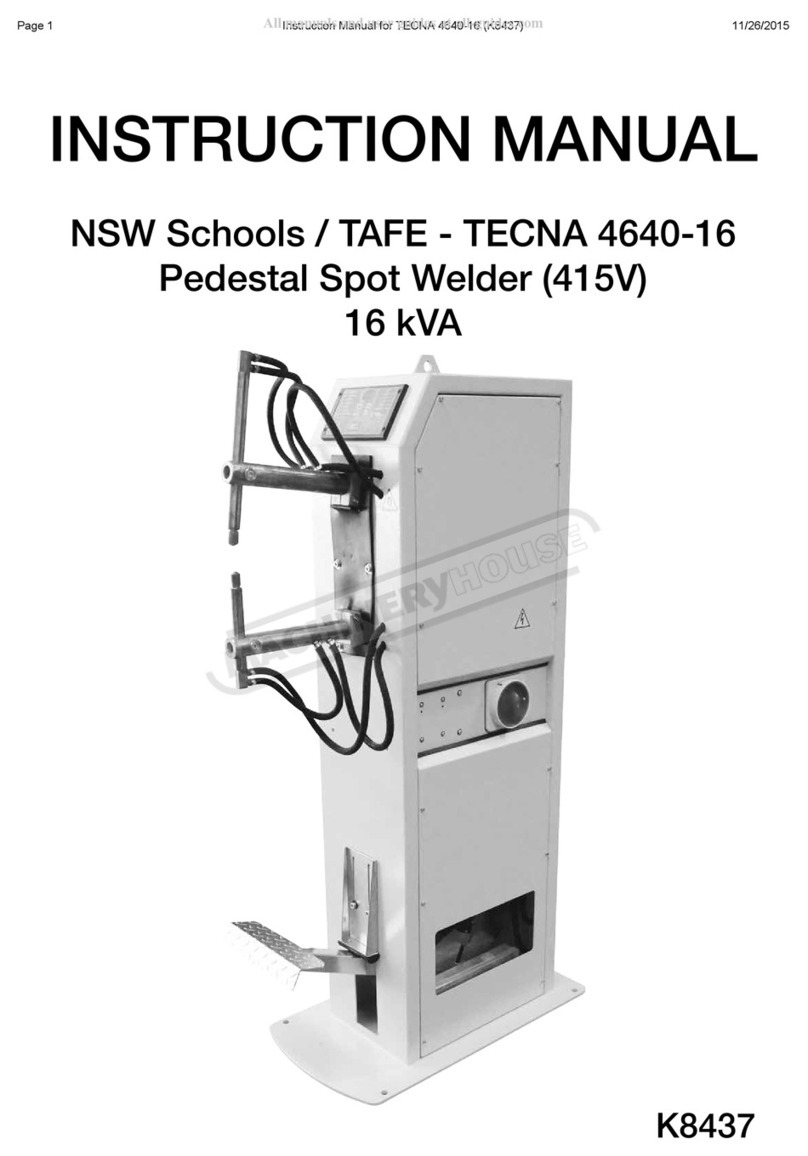
tecn@ SALDATRICI ART. 3401 - 3406 - 3407 - 3408 WELDERS ITEM 3401 - 3406 - 3407 - 3408
Documento numero / Document number: MAN1063 Edizione / Edition: Settembre / September 1997 PAG. 9 / 32
3 INSTALLAZIONE
I presenti paragrafi sono destinati al personale specializzato
addetto al trasporto ed all’installazione della macchina. Nelle
ultime pagine di questo manuale è presente il disegno
d’ingombro della macchina che riporta indicazioni necessarie a
svolgere queste operazioni.
3.1 LUOGO DI INSTALLAZIONE
La macchina va installata in una posizione che soddisfi le
seguenti caratteristiche:
• In ambiente chiuso, non è previsto l’uso della saldatrice in
luogo aperto.
• Con temperatura ambientale compresa tra 0 e 40 °C (per il
solo magazzinaggio, qualora venga tolta l'acqua dal circuito
di raffreddamento, la macchina può essere tenuta fino a -20
°C) ed altitudine non superiore ai 1000 m.
• In una zona ben aerata, libera da polvere, vapori, esalazioni
acide.
• Il luogo di lavoro deve essere privo di materiali infiammabili
in quanto la lavorazione può comportare proiezioni di
particelle di metallo fuso.
• Intorno alla saldatrice deve rimanere lo spazio necessario ad
eseguire agevolmente e senza rischi la lavorazione e la
manutenzione.
• In luogo adeguatamente illuminato in relazione al lavoro da
compiere.
• La posizione di installazione deve necessariamente essere
piana ed il pavimento privo di asperità che possano creare
rischi durante la lavorazione.
Se si prevede di utilizzare la macchina per saldature che
possano generare fumi si deve installare un adeguato impianto
di aspirazione. La saldatrice deve essere fissata al pavimento
tramite adeguati tasselli, utilizzando gli appositi fori previsti
sulla base della macchina. Non installare in prossimità della
macchina tavole di supporto o attrezzature che riducano
l’accesso ai dispositivi di comando e/o rendano irraggiungibili o
inefficaci i dispositivi di protezione.
3.2 DISIMBALLAGGIO E TRASPORTO
Al ricevimento della macchina verificare la perfetta integrità
esterna dell’imballo e denunciare ad un responsabile eventuali
anomalie riscontrate. Eventuali danneggiamenti dell’imballo
dovrebbero far sorgere dubbi sull’integrità del suo contenuto.
Rimuovere l’imballo e verificare visivamente l’integrità della
macchina. Controllare che la macchina sia completa di tutti gli
accessori in dotazione; segnalare tempestivamente al
costruttore eventuali parti mancanti. Tutto il materiale che
compone l’imballo deve essere smaltito nel pieno rispetto delle
vigenti normative sulla protezione ambientale.
Il baricentro della macchina è alto da terra. Questo comporta
che la saldatrice deve essere movimentata unicamente
utilizzando l’apposito aggancio posto nella parte superiore.
Tenere conto del peso della macchina indicato nel paragrafo
“CARATTERISTICHE TECNICHE”.
3.3 INSTALLAZIONE CIRCUITO DI RAFFREDDAMENTO
Per un corretto raffreddamento della puntatrice è necessaria
acqua pulita con temperatura massima di 30 °C nella quantità
indicata nel paragrafo “Caratteristiche tecniche”. Al momento
del collegamento fare attenzione che non vi sia sporco o
frammenti di imballi nei tubi e collegare l'alimentazione
all'ingresso e lo scarico all'uscita, ciò per permettere all'acqua
ancora fredda di raggiungere prima i punti della macchina più
soggetti a riscaldarsi.
E' possibile eseguire il circuito di raffreddamento in modi
diversi: con acqua a perdere, a circuito chiuso, con
scambiatore di calore acqua-aria e con refrigeratore. Se il
circuito è a perdere o con refrigeratore e si lavora con una
elevata umidità si consiglia di evitare l'uso di acqua a bassa
temperatura perché porterebbe alla formazione di condensa
all'interno della macchina.
3 INSTALLATION
These paragraphs are addressed to the specialised personnel
in charge of both welder handling and installation. The welder
dimensions drawing, placed in last pages of this manual,
provides useful information for carrying out these operations.
3.1 PLACE OF INSTALLATION
The welder must be installed in a position fulfilling the following
features:
• In an inner place. The welder has not been designed for
being used in an open place.
• Room temperature included between 0 and 40 °C (If water is
removed, storage is allowed down to 20°C below 0); 1000 m.
maximum altitudes.
• In a well ventilated area, free from dust, steam, and acid
exhalations.
• The working place must be free from inflammable materials
because the working process can produce spatters of melted
metal.
• Around the welder there must be enough room to carry out
both working and maintenance in a comfortable manner and
without any risk.
• In a place with a suitable lighting system in comparison with
the work to be carried out.
• The place of installation must necessarily be flat and the
ground must be without unevenness which can be
dangerous during the working.
If the welder is used to carry out welding processes which can
cause smoke exhalations, there must be installed a proper
aspirator. The welder must be carefully fixed to the floor
through the proper holes placed on the welder basement. Do
not install nearby the welder neither supporting tables, nor
equipment limiting the approaching to the devices and/or
making inaccessible or ineffectual the safety devices.
3.2 UNPACKING AND TRANSPORT
On receipt of the welder, verify the perfect integrity of the outer
package; communicate to a responsible in charge possible
anomalies which should be noticed. Possible damages on the
outer package should arise some doubts on the integrity of its
content. Remove the package and visually verify the welder
integrity. Check that the welder is equipped with all the
standard components; immediately inform the manufacturer in
case some components should lack. All the material forming
the package must be removed according to the present
environmental protection regulations.
The welder barycentre is high from ground. For this reason,
the welder must be moved only by means of the proper
attachment placed on the unit upper side. Consider the welder
weight stated on the “TECHNICAL FEATURE” paragraph.
3.3 COOLING WATER CONNECTION
For a correct cooling of the welder it is necessary clean water
at a maximum temperature of 30°C at the quantity stated on
the paragraph “Technical features”. When connecting the unit
to the water line check for dirt or packing scraps in the hoses
and connect the supply to the inlet, and the drain to the outlet,
this to allow that the still cool water immediately reaches the
parts of the welder most subject to heating.
Different cooling circuit systems are available: with city supply
water, with re-circulating water, with heat exchanger (air-water)
and with refrigerator. If the circuit is with city supply or
refrigerator and you are working in presence of high humidity,
we suggest to avoid the use of low temperature water, as this
could produce moisture inside the machine.






